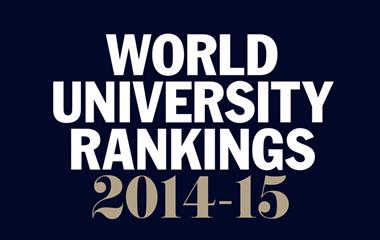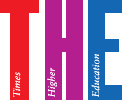Yale, UConn Back-to-Back in Top 10 Best Value Law Schools in US
/The law schools of Yale University and the University of Connecticut both ranked in the top 10 “law schools that pay off,” according to a new national survey of the nation’s law schools. Yale ranked seventh and UConn eighth in the survey by U.S. News and World Report.
The survey determined the 10 best schools where full-time 2014 graduates who borrowed for law school and entered the private sector had the highest salary-to-debt ratio, according to data submitted to U.S. News by 172 schools around the country. Connecticut and Massachusetts each had two law schools ranked a mong the top ten "best value" schools.
mong the top ten "best value" schools.
The leading “best value” law schools were University of Texas – Austin, University of Alabama, Boston College, Brigham Young University, University of Wisconsin – Madison and University of Hawaii. Rounding out the top 10 after Yale and UConn are Boston University and UCLA.
The average student debt among UConn Law graduates was $70,129 for 2014 graduates, the lowest in the Northeast and the 15th lowest in the nation, according to the survey. Starting salaries for graduates entering the private sector reached $95,000 in 2014. That gives the law school a 1.4-1 salary-to-debt ratio, tied for eighth place nationwide.
Among Yale Law School graduates, starting salaries for graduates entering the private sector reached $16,000 in 2014. That gives the law school a 1.4-1 salary-to-debt ratio, with average student debt of $117,093.
Yale University has been ranked as the nation’s number one law school by U.S. News. UConn School of Law ranks 65th on the U.S. News nationwide list, and is the highest ranked public law school in the Northeast. The relatively low student debt level is a product of what the school describes as “reasonable tuition,” now $27,792 for in-state students, and “robust financial aid packages” for eligible students, according to the university.
UConn indicates that 10 months after graduation, more than 80 percent of the graduates from the Class of 2015 had full-time, long-term jobs for which a law degree was required or preferred, up substantially over the last three years. At Yale, that percentage is 93 percent, with 41 percent employed at law firms, 39 percent in judicial clerkships, 8 percent in public interest positions (including public defender), 5 percent in government and 4 percent in business and industry.
“Our high value and great employment results are only part of what makes UConn Law School great. Our students and faculty are deeply engaged in the institutions and communities that surround us, as well as the intellectual exploration of a legal education,” Dean Timothy Fisher said. “That, coupled with a supportive atmosphere and energetic student body, make this an exciting place to learn and a transformative chapter in our students’ lives.”
In recent years UConn Law has added several programs that let students realize even more value from their legal educations, according to the school. Three new LL.M. (master of laws) degrees can be combined with a JD to prepare students for careers in energy and environmental law, human rights and social justice or intellectual property and information governance. The law school has also added, in partnership with the UConn School of Business, a certificate in Corporate and Regulatory Compliance. And the two school are now offering a program to earn both a JD and MBA in three years.
Yale Law students, the university’s website highlights, “are among the most sought after in the nation by employers of all types,” both within and outside of the legal profession.
https://youtu.be/OReBEdVb308
https://youtu.be/VgAJwQ0qyOU


 There are three great areas of our domestic affairs in which, today, there is a danger that illusion may prevent effective action. They are, first, the question of the size and the shape of government's responsibilities; second, the question of public fiscal policy; and third, the matter of confidence, business confidence or public confidence, or simply confidence in America. I want to talk about all three, and I want to talk about them carefully and dispassionately—and I emphasize that I am concerned here not with political debate but with finding ways to separate false problems from real ones.
There are three great areas of our domestic affairs in which, today, there is a danger that illusion may prevent effective action. They are, first, the question of the size and the shape of government's responsibilities; second, the question of public fiscal policy; and third, the matter of confidence, business confidence or public confidence, or simply confidence in America. I want to talk about all three, and I want to talk about them carefully and dispassionately—and I emphasize that I am concerned here not with political debate but with finding ways to separate false problems from real ones. s.
s. The top 10 institutions are Johns Hopkins, University of Michigan (Ann Arbor), University of Washington (Seattle), University of Wisconsin (Madison), University of California (San Diego), University of California (San Francisco), Harvard, Duke, University of North Carolina (Chapel Hill) and University of California (Los Angeles).
The top 10 institutions are Johns Hopkins, University of Michigan (Ann Arbor), University of Washington (Seattle), University of Wisconsin (Madison), University of California (San Diego), University of California (San Francisco), Harvard, Duke, University of North Carolina (Chapel Hill) and University of California (Los Angeles). The survey collects information on R&D expenditures by field of research and source of funds and also gathers information on types of research and expenses and headcounts of R&D personnel. The survey is an annual census of institutions that expended at least $150,000 in separately budgeted R&D during the fiscal year.
The survey collects information on R&D expenditures by field of research and source of funds and also gathers information on types of research and expenses and headcounts of R&D personnel. The survey is an annual census of institutions that expended at least $150,000 in separately budgeted R&D during the fiscal year.



 Watch the video
Watch the video ication sets out to “identify the most public-minded institutions,” utilizing the three criteria and a handful of specific measures in each.
ication sets out to “identify the most public-minded institutions,” utilizing the three criteria and a handful of specific measures in each.



 an estimated
an estimated  as new spending from tax revenues. The other study says that tobacco taxes offer a how-to road map for policy makers.
as new spending from tax revenues. The other study says that tobacco taxes offer a how-to road map for policy makers. ished this month, researchers ran a simulation of the impact of 20-percent soda tax in Illinois and California—selected for regional differences—and found slight employment increases would occur, but the net effect would be close to nothing. They found that people choose to spend their money on other things, not to forego spending entirely, and that employment gains in other sectors of the economy far outweigh the job losses for soda makers, National Journal reported.
ished this month, researchers ran a simulation of the impact of 20-percent soda tax in Illinois and California—selected for regional differences—and found slight employment increases would occur, but the net effect would be close to nothing. They found that people choose to spend their money on other things, not to forego spending entirely, and that employment gains in other sectors of the economy far outweigh the job losses for soda makers, National Journal reported.




























